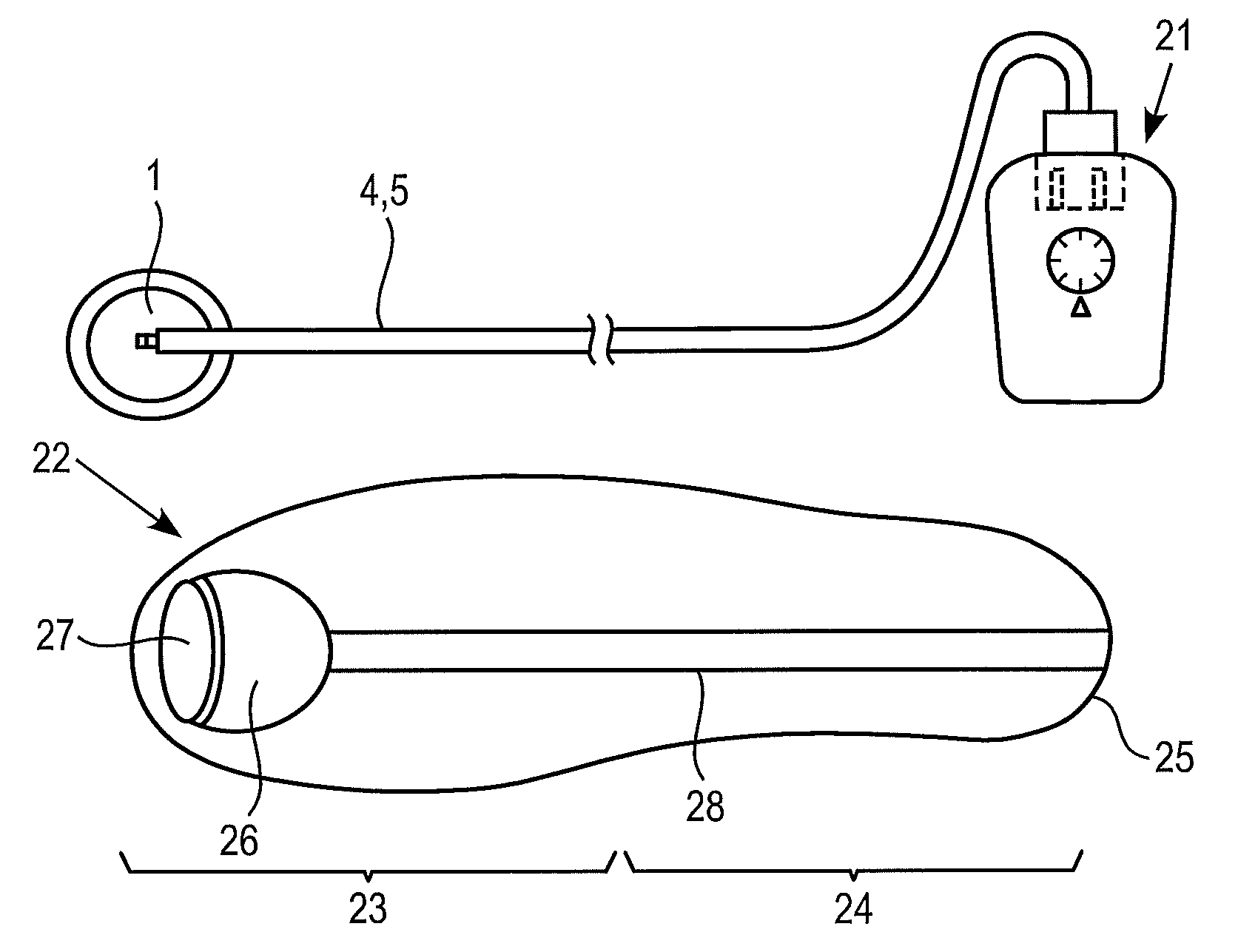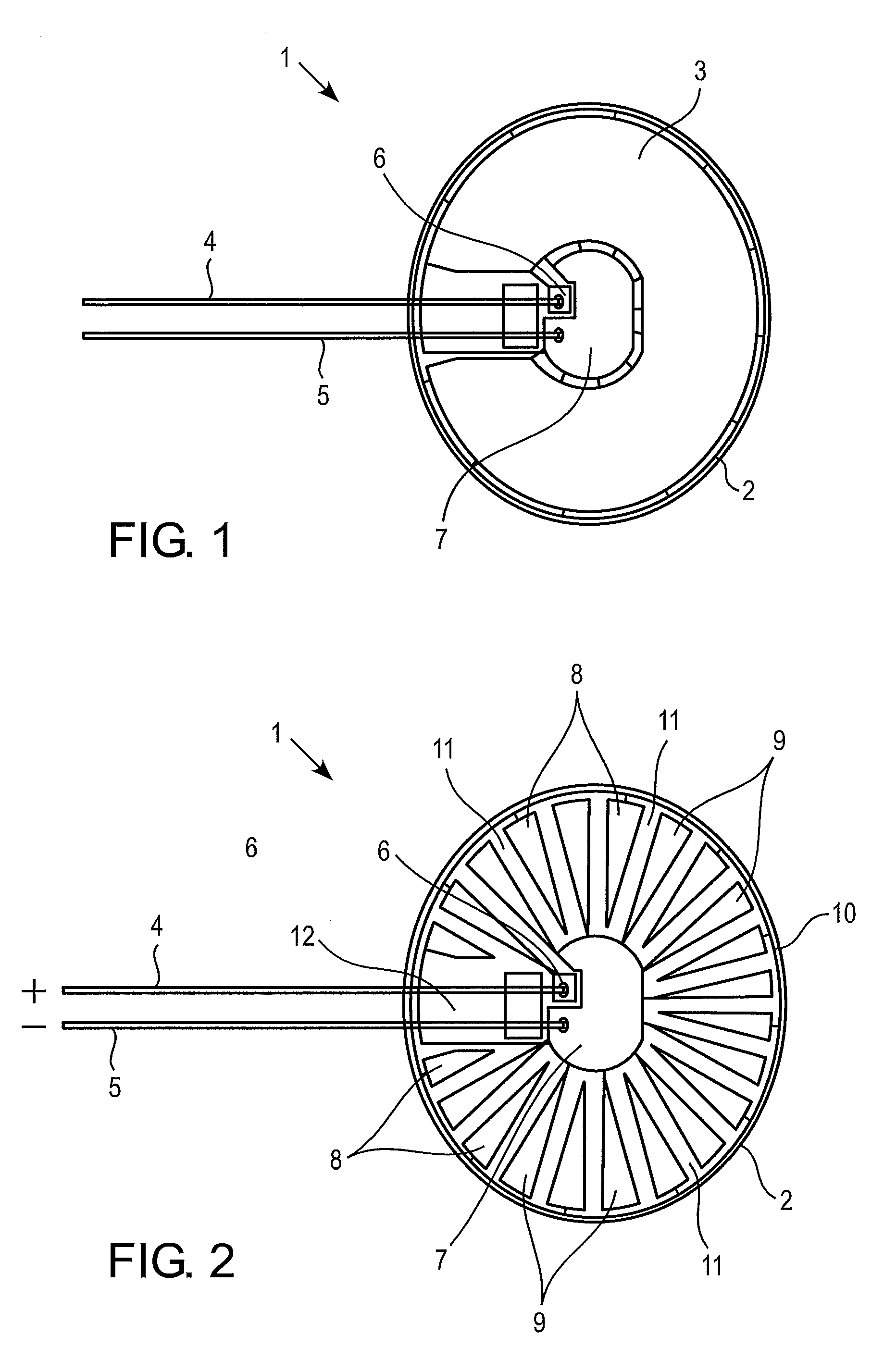Electric heating element for insoles
a technology of heating element and insole, which is applied in the field of electric heating element for insoles, can solve the problems of inability to trim the insole, risk of damaging or destroying the heating element, and inconvenient use, so as to enhance the life of the power pack, enhance the comfort of the wearer, and enhance the effect of heat distribution
- Summary
- Abstract
- Description
- Claims
- Application Information
AI Technical Summary
Benefits of technology
Problems solved by technology
Method used
Image
Examples
Embodiment Construction
[0022]The following description of exemplary embodiments of the invention is for illustrative purposes only and is not intended to limit of the scope of the invention.
[0023]In FIGS. 1 and 2 a heating element is generally designated with reference numeral 1. The heating element comprises a flat material sheet 2 with electrodes 8 and 9 distributed across the surface of the material sheet 2 (FIG. 2). In a specific embodiment the heating element comprises a piece of a printed circuit board, which is made of a sheet of electrically isolating material, usually a fiber reinforced resinous structure, with electric conductors on one of its surfaces. The electric conductors, i.e. the electrodes 8, 9, are established e.g. by appropriate etching of a layer of copper which has been deposited on the basic material sheet 2. At the completed heating element, which is depicted in FIG. 1, the electrodes are entirely covered with an electrically resistive coating 6, such as, e.g., a polymer-resistive ...
PUM
 Login to View More
Login to View More Abstract
Description
Claims
Application Information
 Login to View More
Login to View More - R&D
- Intellectual Property
- Life Sciences
- Materials
- Tech Scout
- Unparalleled Data Quality
- Higher Quality Content
- 60% Fewer Hallucinations
Browse by: Latest US Patents, China's latest patents, Technical Efficacy Thesaurus, Application Domain, Technology Topic, Popular Technical Reports.
© 2025 PatSnap. All rights reserved.Legal|Privacy policy|Modern Slavery Act Transparency Statement|Sitemap|About US| Contact US: help@patsnap.com



